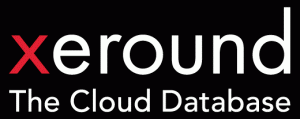 by Razi Sharir, CEO of Xeround
by Razi Sharir, CEO of Xeround
Cloud infrastructure is being continuously improved and optimized, so that over time it will be standardized and commoditized. Today’s cloud service providers are offering nearly identical hardware and stacks, which is more cost effective on their end in terms of maintenance and operational costs. This begs the question: How will each cloud provider differentiate and survive among others?
When the roads and lanes are the same, the car you drive becomes the issue.
The key differentiators for each cloud provider have now become the premium features and the unique set of functions they offer on top of their infrastructure. At the end of the day, cloud users will pay for services rather than for the bare iron.
In this landscape of multiple cloud hosting options, and the focus of both cloud operators and end users on the value-added services – what’s next for cloud databases? What does a cloud database need in order to achieve success? Below are three factors I believe will play a key role.
Everything-as-a-Service. And I mean EVERYTHING.
Database users in the cloud will come to expect more. Simply installing a database on a virtual machine and calling it a “cloud database”, or doing an aggregation of API-calls or scripts and calling it “automation” won’t cut it.
Developers would want to ensure that their DB always runs optimally in the cloud no matter what – and that it is delivered in a true end-to-end service that just works out of the box.
This includes high availability, auto-failover, scaling out, scaling read and writes, snapshots, and everything else that makes up the “M” in RDMBS.
A true cloud database solution needs to deliver even the most complex of DB operations in a simple, auto-pilot mode, with no need for any maintenance or developer intervention. “Zero-management” isn’t just a slogan – it is actually doable on a cloud service.
Open Source
An important consideration when choosing a cloud database is simplicity and cost. A no-fuss, inexpensive solution that installs quickly and requires the least amount of maintenance allows developers to focus on what’s really important: their code, rather than on the IT.
Cloud DBs that support known and widely used open source databases that enjoy mass adoption, such as MySQL or PostgresSQL, allow developers to streamline their development and get on the cloud wagon faster. They can start using the DB service with no code changes to their apps, taking advantage of a DB syntax they are already familiar with. Furthermore, they can do it in a way that allows them to start small (bootstrapping) – with no major upfront costs – and later scale with their chosen database service as their application gains momentum.
Platform Agnosticism
Many solutions lock users onto one cloud platform, causing problems for application developers in the event of an outage, need to migrate the app for whatever reason, replicating to support different GEOs, or other common scenarios. Developers seek both flexibility and reliability in their cloud databases to avoid service downtime while maintaining freedom of choice for any eventuality.
With native cloud databases (databases specifically engineered and built for the cloud) that are cloud and platform agnostic, developers can get the flexibility they need and can run their DB on any cloud service provider or migrate their database seamlessly between different clouds.
Great things are in store for cloud databases and for cloud applications in general. The cloud database movement and innovation in SQL in the cloud (what is now referred to as “NewSQL”) began with start-ups, and now even the big players such as Oracle and Google want in.
As more and more users move to the cloud – database and all – capabilities are becoming more robust, users have more choice, and things can only get even more interesting!
With these factors of success, cloud databases that manage to expand on their zero-management service capabilities, enrich their feature set and improve as the cloud is standardizing will be the last ones standing.
Razi, CEO of Xeround, has more than 20 years of management experience in product/solution development from concept to release in various disciplines. Razi has expertise in visionary and strategic marketing as well as in driving products to market from positioning through go-to-market and delivery. Prior to joining Xeround, Razi has led the strategic transition from traditional data centers to cloud computing at BMC Software, the Incubator/Innovation Lab business unit, and has held senior positions as VP of R&D at Commtouch Technology, Starhome, and various roles at Microsoft.
See also our exclusive interview with Razi back in October 2011.